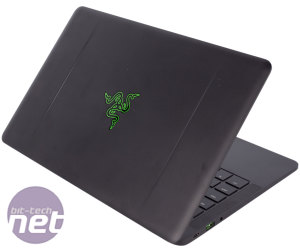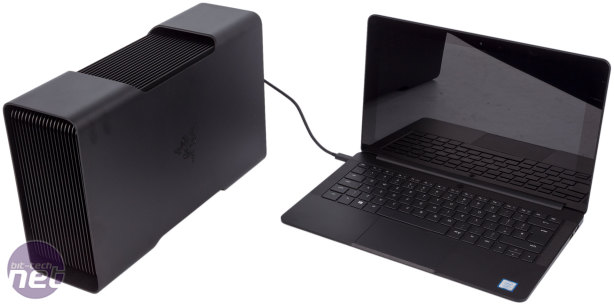Conclusion
As an ultrabook, the Blade Stealth is a mostly lovely unit – well built, exceptionally portable and powerful enough for the tasks it's intended to perform. The screen resolution makes for a sharp image and the display is accurate, while battery life is also impressive and the Chroma-enabled keyboard is a neat touch too. All of this comes at a considerable price, of course, but we wouldn't say it's excessive. The 512GB 1440p model strikes us as the best option at £1,350: 256GB is a little too easy to fill these days, and the 1TB and 4K upgrades are pricey and less relevant for most users, although some professionals will definitely appreciate the Adobe RGB gamut support of the 4K model.It makes a strong case for itself as an alternative to the Dell XPS 13 and Apple MacBook Air, but the fingerprint magnet that is the chassis plus the glossiness of the screen and the size of its bezels mean we're struggling to recommend it. These are mostly aesthetic complaints, we know, but we feel they hold some validity beyond that – no-one wants a laptop that looks like it's been manhandled by a Vaseline addict, and the glossiness we found to be a genuine distraction. Still, if you can look past these (the touch-sensitive display may be critical to some users), the Blade Stealth is a genuinely great ultrabook well deserving of your attention.
The Core, meanwhile, is another lovely bit of kit. For a first attempt at an external GPU dock, Razer has been remarkably successful and we're struggling to fault it. Some dust filtering material might be nice, as well as a longer Thunderbolt 3 cable and perhaps a slightly less noisy PSU, but we're nitpicking here. More important is how well made it is and how incredibly easy it is to use – it's exactly as it should be in this regard, and again Chroma RGB lighting is a nice touch. Even so, the £500 asking price is just too high, and even the £400 offer when bought with a qualifying notebook feels steep.
The combination of the Blade Stealth and the Core, however, is not something we can honestly say works as well as it should on the performance side of things. We believe this to be largely the fault of the Core i7-7500U rather than the Thunderbolt 3 connection, and this perhaps isn't a surprise: It is, after all, a dual-core 15W CPU. The degree to which you're affected will depend on the specific GPU you use and the game you're playing, but nobody likes to feel like they're not getting the most from their hardware, especially when it's as expensive as today's high-end GPUs. Much as Razer would like you to believe, the Blade Stealth pared with a Core isn't able to provide desktop equivalent performance.
We totally see the appeal of what Razer is trying to do here: Dropbox and services like it are great, but a single system for everything is a lovely prospect. Disregarding price, it seems like Razer is there on the Core side, but we can't help but feel like the Blade Stealth is a missed opportunity. In its pursuit of ultimate portability to get a leg up on Dell and Apple, Razer has had to sacrifice CPU performance and the difference in games is clear. This is a shame, as that's what Razer always claims to be about. We can't help but wonder how portable Razer could make a system that used a quad-core CPU like the Core i7-6700HQ: There are already some pretty thin laptops out there that use such CPUs, but all of those come with GPUs, increasing the thermal demands and thus the size and weight. We'd happily lose a little portability to have a beefier CPU in this setup that could properly maximise the potential of current GPUs in a Core.
Despite all of this, there is uniqueness and technical excellence in both products (and in the way they combine) which is well worthy of recognition. Our Technical Achievement award is reserved for just such products and Razer has more than earned it here. It's definitely onto something, but it's a near-miss whichever way you look at it. Still, we're excited to see the evolution of this approach to balancing portability and true desktop gaming power.


MSI MPG Velox 100R Chassis Review
October 14 2021 | 15:04











Want to comment? Please log in.